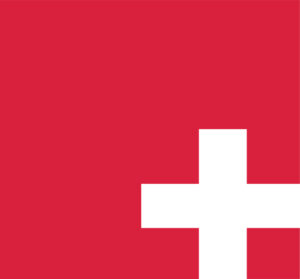One of the most expensive and labor-intensive diagnostic procedures that is performed in most hospitals is an MRI or CT scan.
In many facilities, these tests are scheduled individually and require extensive waiting time for patients who need them. As a result, making these scans more efficient is one way to alleviate some of the stress on hospital staff while also cutting costs.
A computed tomography (CT) scanner may be the answer to your cost-cutting and efficiency needs. Read on to learn more about this useful piece of equipment.
What is a Computed Tomography Scan?
A computed tomography (CT) scan is an imaging technique that uses X-rays to create cross-sectional images of the inside of a patient’s body.
It can be used to perform both diagnosis and treatment planning. A CT scanner uses an X-ray machine that rotates around a patient and collects data from many angles. The data is combined to form a 3D image showing the inside of the body.
CT scanners are capable of producing images of the human body that are accurate to within a millimeter. They are often used to diagnose medical issues such as broken bones and internal bleeding.
CT scans can also be used to detect certain types of cancers and other diseases and conditions, as well as to evaluate foreign objects in the body.
Why Are CT Scans Necessary?
A computed tomography (CT) scan is a type of X-ray that provides detailed images of any part of your body. It is often used to evaluate suspected fractures, find broken bones, or discover other types of internal bleeding in patients. A CT scan can also be used to look for abnormalities or diseases, such as cancers, in specific parts of your body.
Before undergoing a CT scan, you may be asked by the doctor to either drink a contrast liquid or eat a special snack.
The contrast liquid or snack is used to help make the areas being scanned more visible on the images. Some people may have an allergic reaction to the contrast liquid or snack, or have other medical conditions that make them unable to use them.
You should let the medical team know if you have any allergies or special conditions before the scan starts.
Who Should Get a CT Scan?
A computed tomography (CT) scan is commonly used to diagnose injuries and diseases of the bones, joints, and muscles. If a doctor suspects that you may have a fracture or broken bone, a CT scan may be performed. If you have internal bleeding in your muscles or joints, a CT scan may be recommended.
You may also be referred for a CT scan if you are experiencing symptoms of certain diseases or conditions but your doctor is not sure if you have any problems. For example, you may be given a CT scan if you have been diagnosed with an enlarged spleen but the doctor is not sure if it is due to a medical condition or a benign condition.
How Is a Computed Tomography Scan Different From an MRI?
CT scans and MRIs are both medical imaging techniques that use strong magnets and radio waves to create detailed images of your bones, muscles, and organs. Both imaging techniques are often used to diagnose medical issues such as broken bones, internal bleeding, and certain diseases.
A CT scan is a scanning technique that uses X-rays to create cross-sectional images of the inside of a patient’s body. An MRI uses magnetic fields and radio waves to create images of your body. A CT scan is less expensive than an MRI, and it can be completed in less time, although the exact length of each test will depend on the patient and the area of the body being scanned.
How to Cut Waiting Time for CT Scans?
Accommodating as many patients as possible will always be a top priority for hospitals and healthcare providers. As such, it is important to find ways to shorten the time spent on certain diagnostic and therapeutic procedures, including CT scans.
Managed IT systems and automation can help to reduce waiting times during peak hours by making the system more efficient and allowing the scanner to be programmed according to demand. New cloud-based software can also be used to streamline and automate the diagnostic process. Patients can be scheduled to receive scans at the optimal times, when the system is least busy, thereby shortening the waiting time for the tests.
Final Words: Is It Worth the Investment?
A computed tomography (CT) scanner is a machine that uses X-rays to create detailed images of any area of the body, such as the bones or organs. CT scanners are useful in diagnosing many medical issues and can also help the doctor plan treatment. CT scans can be a great option for hospitals and other medical facilities who want to improve their diagnostic process.
However, the initial investment for a CT scanner can be costly, so it is important for facilities to determine how often they will be able to use the machine. By looking at the data, you can decide whether or not the investment is worth it.


